There won’t be another MAME / UME update for roughly 2-3 weeks because Micko is on holiday. Due to this delay I’ve decided to do a bit of an interim update showing some of what has been added since the 0.149 release.
First up there is Hidden Catch 2000, a previously unknown title in Eolith’s Hidden Catch series. It appears to be based on a similar codebase to New Hidden Catch, but with some additional features. This was dumped / bought by Brian Troha and ANY.
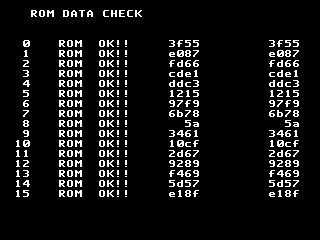
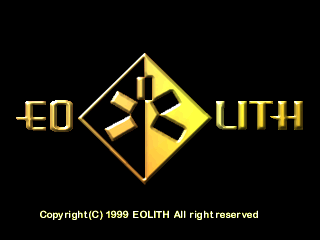
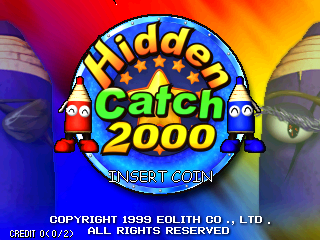
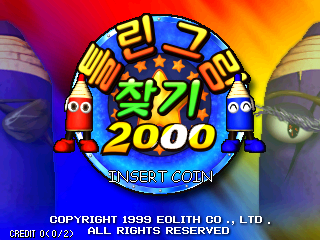


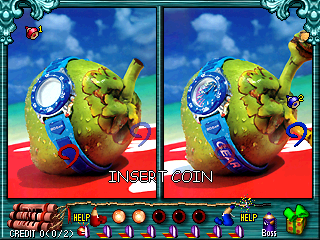
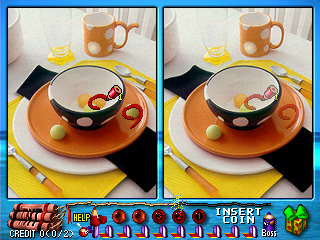
Adding support was a little trickier compared to some of the other Eolith games, because like 2 of the other sets in the driver it uses an MCU with internal ROM instead of a compatible CPU operating in external mode for the Sound CPU. The MCU hasn’t been dumped, and the MCUs also appear to provide some kind of basic startup protection.
The actual sound CPU programs are very simple, so to get sound we can at least substitute it with a program rom from another game in the driver, although I doubt it’s 100% correct. Additionally the main program rom requires a small patch to bypass whatever the extra check they do on the protected sets is. You can see the MCU and empty socket where there would otherwise be a ROM in the picture below.
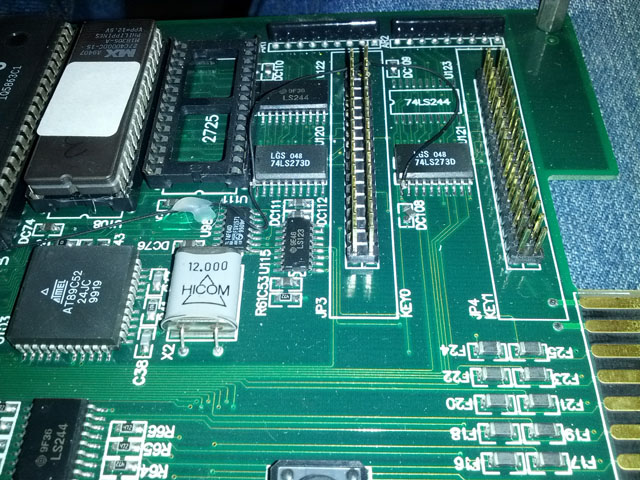
(Hidden Catch 2000 sound MCU)
In addition the game has an extra sound board with an AD-65 (OKI 6295) chip, although so far I haven’t been able to map this properly, looking at the writes made by the game I wonder if there isn’t a hyperstone CPU core bug, it seems to be writing to 2 different 8-bit ports on one address, but the memory mask is always 32-bit meaning every write will also end up writing 00 to the port it isn’t trying to access. I could have misread it, or there might be a genuine bug.
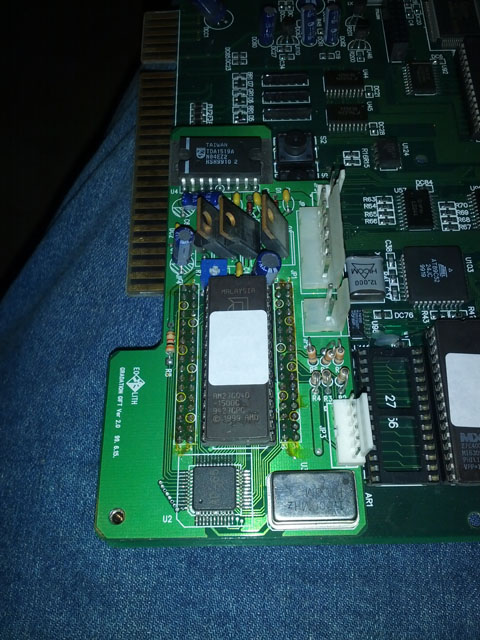
(Hidden Catch 2000 extra OKI)
Possibly the most ambitious progress of the cycle so far is Samuele Zannoli‘s work on Chihiro. Chihiro is an arcade Xbox (original Xbox) which is close to a ‘high end’ PC relative to the other work shown on PC based platforms in MESS recently. Of course it doesn’t hold up well to anything released since, but compared to anything MAME / MESS emulates it definitely comes in at the high end of the spectrum. What he’s actually manage to do is implement enough of the system emulation that OutRun 2 is now capable of getting through the BIOS sequence, loading the actual game code, initializing all the DirectX code and displaying an error message to tell you the JVS unit is missing. In a debug build this process takes roughly 20 minutes to complete (it’s running at 2% speed even in a non-debug) but still really amazing to see something like this boot so far! Tells you a lot about the recent x86 PC work done for MESS and how far along the cores have come.

(Outrun 2 booting up to an error in the Chihiro driver)
Flipping from new to old, Mariusz Wojcieszek spent some time hooking up much of the video for Sea Battle, although some graphical issues remain, and collision might not be quite right (much like so many of the other Zaccaraia games) It’s also got discrete sound hardware due to being such an old game, so currently has nothing resembling the correct sounds at all, but at least it runs and progress is being made.
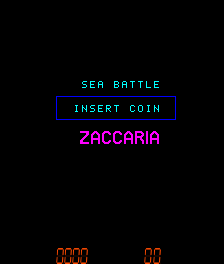
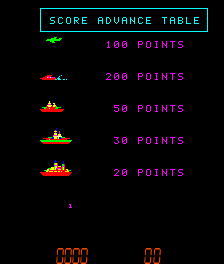
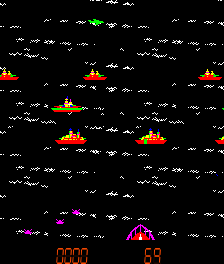
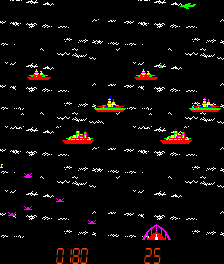
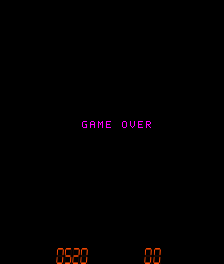
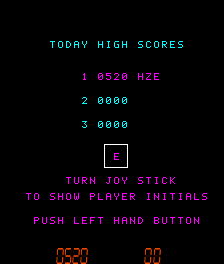
Brian Troha also managed to come up with the English (US) release of Shanghai 3, previously MAME only supported the Japanese version. The US version is both in English and gives you a selection of 3 possible tile-sets to make it more appealing to non-Japanese audiences.

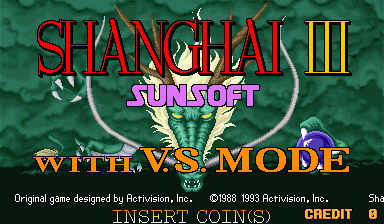
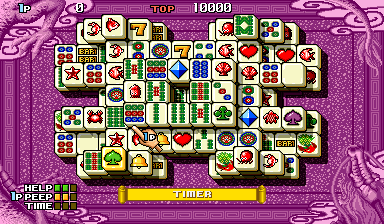
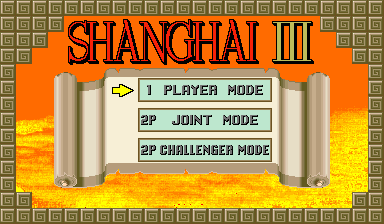
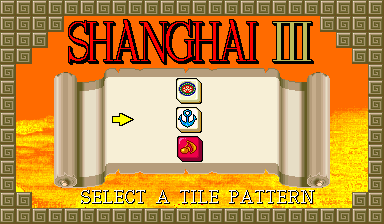
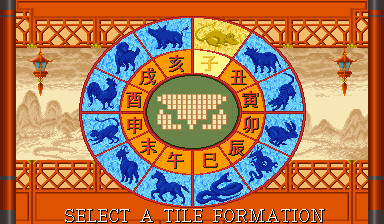

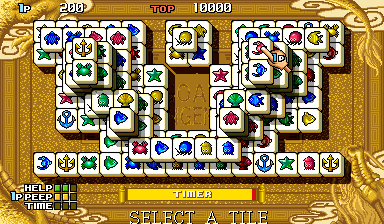
System11 dumped a version of Rapid Hero showing the original NMK copyright, this alternate version is called ‘Arcadia’ I’m not sure what the full story is on this one, because while I’d assume it is an NMK made game the ‘Arcadia’ title shown alongside the NMK logo isn’t the trademarked name, and the Rapid Hero set has a more advanced attract intro where the ‘Rapid Hero’ title flashes during it while Arcadia simply shows the ships without that added effect. Who was ‘Media Trading Corporation’ and why does only their name appear on the ‘Rapid Hero’ version? The actual PCB has always been an odd one too, unlike all the other NMK boards this has the same type of CPU as the NMK004 MCUs are thought to contain, but with a fully external program. Sound was also massively improved in this during a previous release, so 0.149u1 might be a good time to give it a try when it comes out!
You can see screenshots of both versions below.
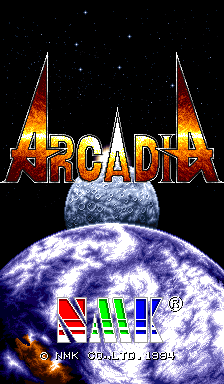
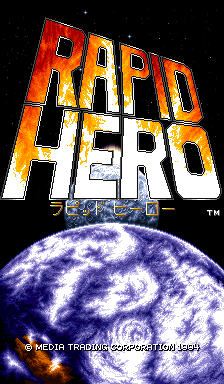
The same contributor also dumped a version of Afega’s Guardian Storm, this time one for a Germany region. This was a bit of work to add because it uses a slightly different lineswapping to the other set. The interesting thing about these games is that all the builds we’ve seen seem to be actual recompiles, possibly slightly minor different revisions of the base code. Afega must have absolutely flooded the markets with these low-budget shooters which seem somehow related to NMK’s output (the hardware is clearly derived) Not only are there multiple versions of these but you have things like ESD’s Fire Hawk and the extraordinarily buggy Spectrum 2000 based on the same codebase again. There’s a story to untangle somewhere with these.
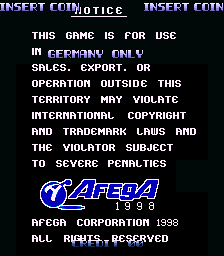
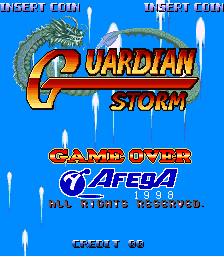
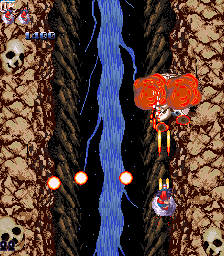
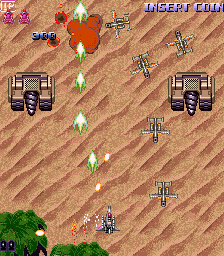
Barry Rodewald isn’t a name I mention too often here because a lot of the work done is important work that slips under the radar, but he’s been working hard on improving the emulation of the display parts of several Data East Pinball machines since 0.149. While I consider it unlikely that MAME will ever emulate the full tables it could still one day become a good replacement to PinMame for use with other applications.












































There have been the usual share of modernizations too, with Osso modernizing a lot of video devices and learning the importance of initialization along the way. Plenty of CPU cores and the like were also modernized, although completion of that task is still very distant on the horizon. I did take care of the M68000 as part of that process, giving it a modern interface, possibly one of the riskier changes to go in considering how widespread use of it is and some of the changes that were needed (it took a week of pulling apart, putting back together and testing) I know that one was scaring a lot of people, so I was glad to do my part for the modernization process by getting it out the way, and hopefully showing that even the difficult ones CAN be done with minimal disruption.
hap has been busy improving the YMF271 (the sound chip used by Seibu SPI) too, I’m told the Raiden Fighters Jet music was significantly improved in 0.149 and will see even more improvements in the 0.149u1 release, something I’m sure a lot of people are happy to hear!
Another curious clone is the new P47 Freedom Fighter addition from Porchy, what can only be described as a censored set. I say curious because apparently its an ‘export’ version with the crosses removed from the planes, as you can see on the bottom two rows of the screenshots below (left is the new set, right is the old set) the strange part is that both sets boot up as ‘For Use In Japan’ The actual Export version we have as the parent is uncensored (assuming it isn’t a frankenset) to add to the confusion. Either way, must have taken a keen eye to notice this.



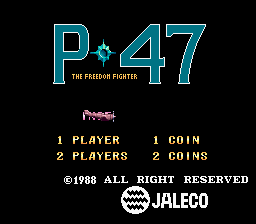
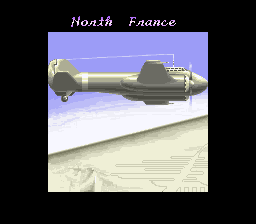
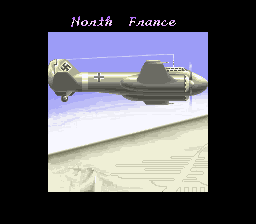


Another finding from Brian Troha was some loose ROMs from a Zombie Raid prototype, hand-dated etc. Unfortunately then turned out to not be quite as interesting as was hoped because the actual program code is an identical game revision to the final game, the graphics are simply split differently. All was not lost however because the set contained ROMs for both the English version, and the Japanese version, both were added (even if the English one is technically identical once loaded) and it does mean that there is now a set with a plain Sammy copyright (rather than American Sammy) and Japanese text; turns out it’s just 3 bytes different tho.
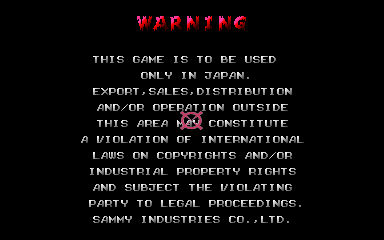
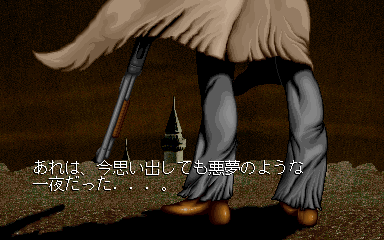
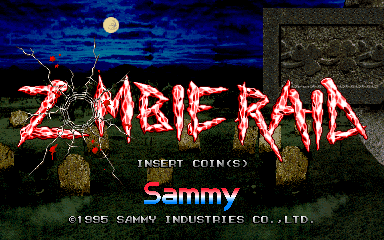
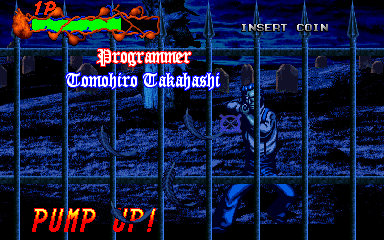
Chris Hardy and Charles MacDonald combined to sort out and decrypt one of the non-working Wonder Boy 3 clones, using the correct ROMs from the ‘wb35’ and ‘wb35a’ sets (I think just wb35a, wb35 was bad) and also fixing / creating a suitable decryption key based on code analysis so that the set can run, like much of this update, nothing you haven’t seen before, but good to have another original set running, this one being an FD1089A based set whereas all the other working sets are FD1094 based, or use a plain 68k with 8751 protection.
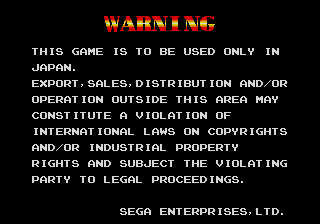
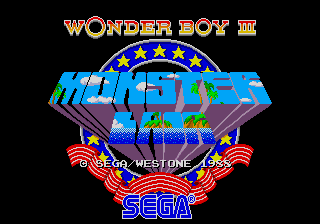
Sega’s Tetris is a game that got around, Alex Meijer uncovered yet another version of it this time on the Taito H system (68K, Z80, YM2610) with this version apparently being a conversion kit for a ‘Go For Gold’ board. This is the 3rd Taito platform for the game to be seen on with 2 previous ‘B’ system versions known one also with 68K, Z80, YM2610 but a very different video system and another ‘B’ system board with a YM2203 instead. Interestingly the ‘B’ version with the YM2610 has bad sound in MAME at the moment, it attempts to play samples from a sample ROM, but none was present on the board. For the H system version the samples (drums) get played from the leftover Go For Gold board. It’s possible the B system 2610 version was some kind of botched conversion because while the sample roms were removed it still had 2 graphic roms from Master of Weapon (which cause corrupt graphics in places if loaded into the regular region). In addition to the Taito platforms it was also released on both Sega’s System 16A and System16B platforms (with the 16A version having some corrupt backgrounds even on original hardware due to tile banking limits)
If you’re counting close in presentation, but not the same codebase ports there was also the Megatech version (which is much more common than the ultra rare Genesis cartridge, even if the game code would have been the same) The System E version is of course completely different because it’s z80 based, even if it was released around the same period.
There was apparently a version for at least one of the ‘Taito F2’ boards, although that hasn’t surfaced yet.
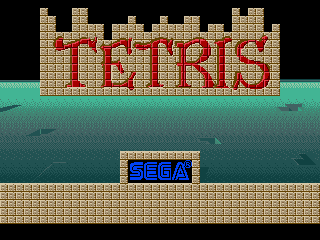
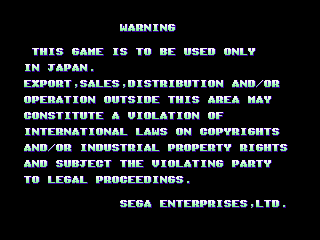
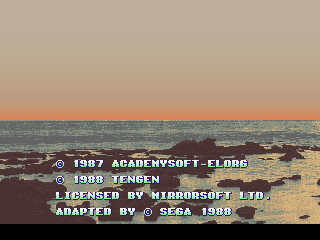
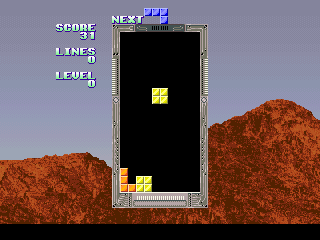
Touché! ;)
I would think that maybe that P47 set was designed that way because in Germany they are anti Nazi symbol displays in games. But it’s still odd it displays the For use in Japan only message. But it’s the logical reason why they did it that way. ;)
Yeah, I wonder if it’s just a newer revision where they realised such things were better censored, would be interesting to see what the code changes are (if any) because it does use different program roms.
According to the guy that made these Tetris conversions (there was a link on shoutbox a week or so ago), H System is indeed a Go For Gold conversion. And B System is a Master Of Weapon conversion.
http://htsuruga.tumblr.com/post/1039369397/taito
Is there any particular areas in Raiden Fighters JET where one could compare current MAME to prior versions (say, 0.148) and notice a real difference? I thought the medals and Ixion’s laser might’ve sounded different but wasn’t sure if it was placebo or not.
Key areas where the emulation sound wonky that I know of (Giant Boss theme in RF1 among others) still appeared to be the same as they always were.
thx for the write up Haze a good read as always :)
To me everything in Seibu SPI sounds better, especially the rhythm was offbeat on many songs before 0.149. If you really can’t hear the difference, well…I’m not gonna disbelieve your ears, but grab the newest version anyway :P there’s some not-sound-related fixes as well.
It’s definitely been coming closer and closer these recent releases. I guess it will still be quite a while yet before the reason why some sounds don’t play / instruments are weird/missing on select songs are found.
I can’t even figure out how to get my sample hack working again with all the changes, even with the code example you provided at MAMEWorld. All the inheritance changes messed up my variable set code (samples = 1 for RF1, etc). Looking forward to the day where it’d be pointless to use it anyway, at the moment the Giant Boss theme and a lot of other tracks still seem to be not-quite-right. Could it be as simple as a banking issue there or is it more complex?
That’s not to say I’m not appreciative either hap. Having someone look through and fix things piece-by-piece is just what the Seibu SPI games need, and I salute you for your efforts. Good luck with it. :)
Actually I might do some recordings where the music actually does sound right. Is there anywhere where direct PCB recordings are available?
sure! =) A good quality recording of that boss theme may be helpful. You can upload it to this report on MT: http://mametesters.org/view.php?id=4533 (and might want to put ‘hap told me to put it here’ in case someone should complain it’s not from viprp1 :P
As for other PCB recordings. The Viper Phase 1 ones in the above link are very good quality. Stuff on youtube less so.
Another “‘틀린그림찾기”! Eolith made lots of these series.
Nowaday new “Hidden catch 5” applies unique LCD cabinet for high resolution display. (In fact, built in an AMD-CPU with M/B internal graphic core PC.) And it looks the company name “eolith” changed to “NiceN2”.
Thank you for mentioning the WB3 work in the update, that was a nice surprise. :)
Sega work always interests me, especially when it’s a case like this where the unemulated version is unique in some way (in this case using a different protection chip to the other sets)
I’m gutted we haven’t managed to secure the remaining System E games yet, would have been interesting to see how the arcade Megumi Rescue compared to the SMS one, although Slap Shooter probably isn’t quite as interesting.
(oh and also that we still don’t have a complete set of all the parts for any of the system16 / x-board era gamblers, I do hope a complete set shows up one day.. would be a fun use / test of the driver)
Hello,Haze,these days I have visit the SVN(http://git.redump.net/mame/commit/?id=bb058936f727c392bbd7b88c70927e29e9c8913d),I have a question not understand that the begin collapse if has useful information,why do this?
It is to clean up the code (there are duplicate copies of much of the Konami code) It should have no visible effect when I’m done.
Has anyone found out if Afega ripped off music for Guardian Storm?
Seems there are also B-System (or similar) conversions for a Rastan 2 / Nastar board around. There’s a picture of it below with B72 and B81 roms still on it.
Pic of those boards can be found here:
kepfeltoltes.hu/view/130710/pcb_eladasra_TAITO_010_www.kepfeltoltes.hu_.jpg
It also shows the MOW roms still in place on the second board :)
@hap
I don’t have an actual board myself unforunately, and somehow I think considering how keen the guys at MAMETesters were to jump down my neck for the rfjets graphics glitch I don’t think they’d be too happy with recordings of what they can clearly hear in MAME. :P
I do remember someone in FFShrine posting a FLAC line recording of RF somewhere though, I’ll see if I can find that.
Just wanted to say fantastic job with modernising the M68000 games & also for untangling all the Konami GX drivers.
I was wondering how far Mame is from being %100 modernised?
Also I was wondering if everything is okay with Kale? He hasn’t updated his page in a while, which is a shame because he was making a lot of worthwhile contributions.
The modernization is a moving target, as soon as we’ve modernized things to one standard it seems we end up with a new one, sometimes before!
If you look at some of the changes by “oliverst” you’ll see they declare more things ‘legacy’ and thus in need of modernization (although don’t actually introduce a new standard, the changes just act as a reminder that there are still bits in the drivers that should be modernized further)
CPUs are still one of the main things not converted over yet, it’s one of the trickier things to do, and also one of the most delicate as if you make a mistake a lot of things are going to be affected (I noticed when working on Hidden Catch 2000 that settings registers on the Hyperstone from the debugger is broken since that modernization for example)
Kale, I think just lacks motivation / interest right now, he’s been tidying up a few loose ends with the Seibu screen controller, but I think he’s looked at most of his main targets a number of times now, and it’s easy to burn out with some of them.
The Konami stuff still really needs a rewrite, but my goal is at least to bring the various bits of code closer together, we’d ended up with various duplicate implementations of the same thing but with minor per-system mods, not ideal if you want to replace it later; it’s definitely better to have things already as close as possible to one standard. The existing code was also impossible to understand in places, meaningless reused and abused variable names in giant functions etc. all left over from when Acho was working on it years ago, I hope by splitting it up and making it more verbose it will be easier to pick up again later, as things stood it was a significant learning process every single time.
Also splitting the chips out into individual files revealed a bunch of dead code, eg. there are implementations for the 3D chips on the GtiClub board, but they seem to have ended up being replaced by non-device local ones in the driver and the device versions have been left completely unused and the code has been neglected. Might need to quiz Ville about that one.
I think I’ll prod Kale a bit about Konami’s Overdrive, it looks like a mess of a game (awful framerates, dubious design decisions, terrible code etc.) but I have a feeling we could improve it a bit.
One of the reasons I wanted to get some of this Konami stuff in better shape was to have another look at the Konami Tasman gambling platform too, it’s basically a Konami-GX hardware clone for video slot machines and could give us some interesting insight for further improving GX too if we get it booting.
In order, from most important to least:
1) Having a GF;
2) Working with indie side projects (videogame(s), PD and not-so-PD);
3) Lack of motivation;
What’s a girlfriend, Kale? Can you emulate one for me so that I can use my powerglove controller again? :)